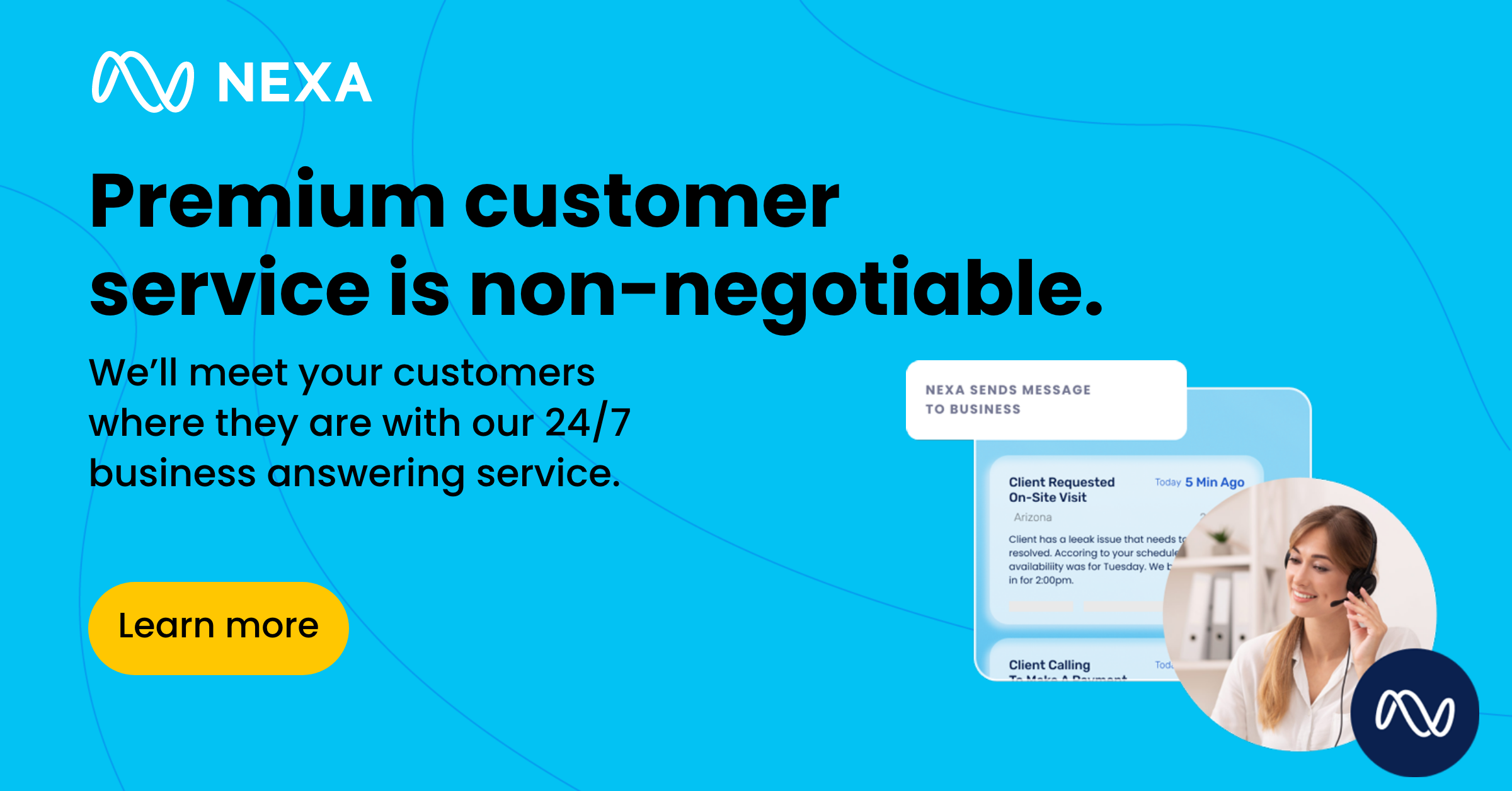Wondering where you can find quality leads and diversify the patient base? Read on for a guide on how to find new patient leads.

Whether you’ve just opened a new practice or you’re simply looking to diversify your patient base, finding new patients is part and parcel of any medical practice. But, how exactly do you find leads, and how do you know if they’re high-quality?
In this article, we’ll explore how to find new patient leads, including tried-and-true tactics like leveraging your social media presence as well as less familiar practices like hosting online webinars and events. But first, to help you determine where to invest your resources, we’ll determine what makes a lead high-quality and discuss the all-important metric of cost per lead (CPL).
This guide will show you how to bring more patients to your practice and how a medical office answering service can help, step-by-step.
What Is a Quality Lead?
In marketing terms, a lead is a potential new client or patient. Lead generation—the practice of finding and vetting new leads—is generally a marketing-related undertaking that requires investing time and resources to find, vet, and schedule a new patient.
Before you start calling every person in your contacts list to ask if they need a new medical provider, consider your goals for lead quality. While casting a wide net might generate leads, it’s unlikely to beget quality leads.
So, what makes a quality lead? Leads are high-quality if they have a high likelihood of converting from potential clients to scheduled patients. The following characteristics indicate the potential for a high-quality lead for a medical office:
- Leads searching for a new medical provider because of
– Insurance coverage changes
– Dissatisfaction with current or past providers
– A recent move - Leads who have a history of seeking out quality medical care
- Leads who know another patient at your practice
- Leads with a personal connection to you
While the success of any lead generation campaign depends upon the number of quality leads discovered, remember that all digital marketing efforts—especially finding excellent leads—come at a cost.
Cost Per Lead (CPL)
While you should take every step possible to generate high-quality leads for your medical practice, don’t forget to consider your cost per lead. Determining your ideal cost per lead is a key step in learning how to find new patient leads. This will help you stick to a budget and evaluate the success of any strategies you try.
The cost per lead (CPL) is the investment you make to secure one lead. For instance, if you spend $2,000.00 on a lead generation campaign and secure 20 leads, your CPL is $100.00.
What’s a reasonable CPL? That completely depends upon your practice’s liquidity, your healthcare marketing budget, and your financial priorities. You want to achieve as low a CPL as possible, but lead generation isn’t free.
Only you can determine your ideal CPL and your digital marketing budget. However, you can take the following steps to help you determine what these figures might look like for your practice:
- Look at your patient scheduling. How many new patients do you need to create a schedule busy enough to make the practice profitable without overworking yourself and your staff? Let’s say you need 10 new patients to fill the gaps in your schedule.
- Determine how much money you have to spend on marketing. At the end of a fiscal month, consider how much leftover cash you have after paying your bills. Do you want to use all of your surplus cash on a lead generation campaign, or only some of it?
- Let’s say you have a surplus of $1,000.00 to spend on marketing this month, and you want to invest it all in lead generation. To stay within your budget, you must keep your CPL below $100.00 per lead.
Use your lead generation time wisely—if you have limited CPL funds, limit your cold calls and other strategies to target-rich environments to optimize your efforts. While that will require some market research (and time is money), try to prioritize efficiency during your campaign.
Strategies for Finding Patient Leads
Once you’ve set some parameters for what a high-quality patient lead looks like and how much you want to spend on your marketing campaign, it’s time to hit the streets—or the internet—in search of a potential patient.
Next, we’ll cover four strategies for lead generation.
#1 Online Reviews
Online reviews are a powerful tool that can make or break your lead generation process. 87% of shoppers read product reviews before buying a product or scheduling a service appointment, and 79% of people trust online reviews as much as they would trust a recommendation from a friend or colleague.
Those statistics may be startling, but they provide a clear path for your marketing campaign—investing some time in requesting excellent reviews from current or past patients could generate more leads than you expect.
But, choose your reviewers carefully. While you want to pursue transparency as much as possible, you should make a list of patients whom you’re confident will leave a great review. Make sure to reach out to them as personally as possible—opt for phone calls over email, or ask a favorite patient in person at their next appointment.
Once your number of good reviews increases, you can use your average rating as a sales tactic for potential leads. If they’re in search of testimonials, they don’t have to look any further than your practice’s Google reviews.
#2 Social Networking
Reviews aren’t the only online tool you can use to attract new patients to your practice. Your social media accounts can also be leveraged to your advantage.
If you’re a social media newbie, recruit a friend to teach you the ropes or watch a few online tutorials. The following should all be included as a part of your social media lead generation strategy:
- Branding – Make sure that your branding is consistent across all of your social media accounts. If you don’t already have a logo, a standard font, and a color palette, now is the time to create a visual identity. Posting a unified brand image on social media will make your practice appear even more professional and sophisticated.
- Goals – Establish some goals for your social media efforts. Some possible benchmarks include gaining a certain number of new followers, meeting your daily posting goals, or engaging with a potential patient as much as possible.
- Campaigns – How are you going to engage with your followers? Consider an “Ask a Doctor/PA/Nurse/Dentist” campaign where patients can send in medical questions and get your expertise. Campaigns are an excellent opportunity to showcase your brand’s voice and sell yourself as a provider.
Other than raising brand awareness, a strong social media presence will make you and your practice appear more current. It can also give potential patients confidence that you’re constantly learning both inside and outside of the medical field.

#3 Hosting Online Webinars and Events
After you’ve built up a substantial social media presence—and hopefully gained some followers—use your new online platforms to your advantage. Invite followers, friends, and colleagues to an online webinar or event.
Hosting an online event can boost your online presence, make your name and face known in the community, and provide an opportunity to network with potential patients.
To plan a successful event, consider the following:
- Which online meeting platform you’ll use:
– The capacity limits for the platform
– The cost to the host
– Patient interaction tools available on the platform
- When the event will take place (consider holidays, community events, and your target demographic’s likely schedule)
- The topic most likely to attract and convert leads
- Whether you’ll invite guest speakers or host the event on your own
Advertise your event on all of your social media accounts, and encourage your friends and family to share details of the event. Creating a vibrant event flyer or promotional image can boost attendance and improve the likelihood of generating quality leads.
Most importantly, collect the contact information of all attendees through a sign-up form. All attendees are potential leads.
#4 Vetting Quality Leads with a Virtual Receptionist
Once you’ve gathered leads from online reviews, social media, or an online event, it’s time to do the most tedious part—vetting leads to determine which ones are most likely to convert to patient status.
Instead of using your own valuable time to vet leads, consider using a virtual receptionist to support your efforts. Virtual receptionists provide much more than medical office answering services. They can reach out to your list of leads, ask them a few simple questions about themselves and their healthcare needs, and make an effort to schedule them during this preliminary phone call or texting service.
You can provide your virtual receptionist with your parameters for a quality lead as well as links to your calendar and new patient forms.
Finding New Patient Leads with Nexa
Quality leads are contacts who have a high likelihood of becoming patients, but these valuable potential clients don’t appear without investment. Keeping your CPL low and using your time wisely are two crucial elements of a successful lead generation campaign, but with the help of some online tools and a virtual receptionist, you can fill up your schedule in no time.
You don’t have to do lead generation alone—reach out to Nexa for lead vetting and new patient appointment setting services. With friendly, well-trained receptionists available 24/7, your high-quality leads will have access to support even when you’re off the clock.
Investing in lead generation is key to finding new patients, and Nexa is here to help you grow and promote your practice.
Sources
- Forbes. Five Lead Generation Strategies for Your Business. https://www.forbes.com/sites/forbescoachescouncil/2021/04/20/five-lead-generation-strategies-for-your-business/?sh=454f7dc18f9d
- Forbes. Why You Should Know Your Cost Per Lead Like the Back of Your Hand. https://www.forbes.com/sites/theyec/2017/03/24/why-you-should-know-your-cost-per-lead-like-the-back-of-your-hand/?sh=54c6158a4c5b
- Forbes. How Revenue Can Increase Through Reviews. https://www.forbes.com/sites/forbestechcouncil/2021/05/25/how-revenue-can-increase-through-reviews/?sh=740644464df0







































































